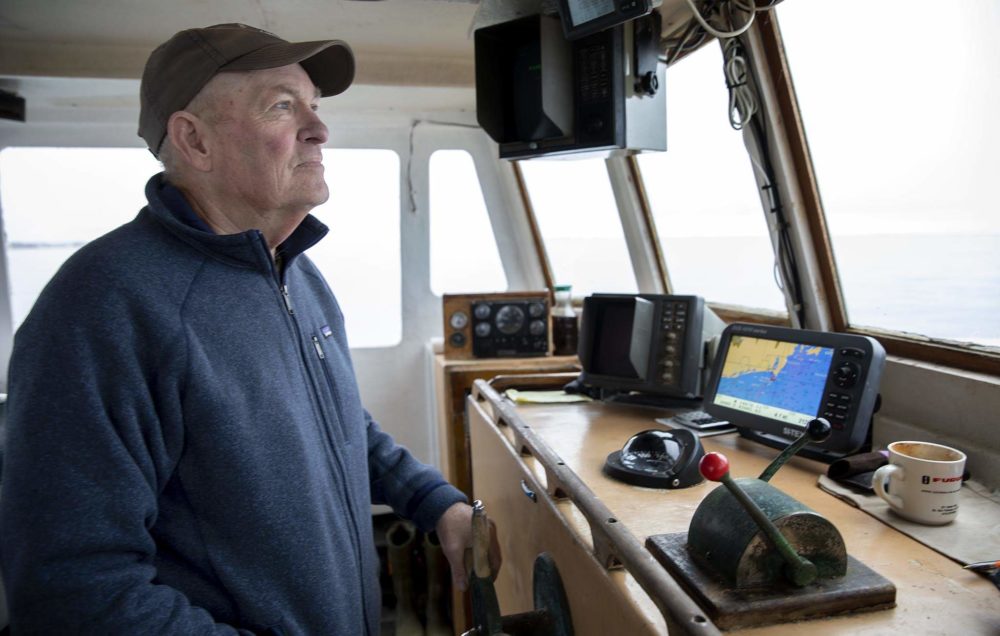Fishermen And Scientists Join Forces To Track Effects Of Climate Change

Lobsterman Mark Sweitzer steers his boat, the Erica Knight. (Robin Lubbock/WBUR)
Last October, lobstermen fishing off the coast of southern New England noticed the lobsters getting more active. That’s fairly common, says Mark Sweitzer, a commercial fisherman out of Port Judith, Rhode Island.
“It’s not unusual for there to be a big pop of lobster in September or October,” says Sweitzer. “Fall’s our best fishing.”
But along with the lobster came something more unusual: a temperature spike on the seafloor, about 150-200 feet down. The temperature jumped from about 50 degrees to 60 — “a big, big change,” says Sweitzer — and stayed there for 38 days, from October 10 to November 15.
Sea surface temperature can change rapidly, rising or falling with strong winds or a storm. But at the bottom, temperature changes much more slowly. “So to get a temperature change that big on the bottom, that is major,” says Sweitzer. “Something caused that to happen. That wasn’t a few warm nights.”
Sweitzer noted the temperature change because he’s part of a network of fishermen collecting data for the Shelf Research Fleet, a joint venture of the nonprofit Commercial Fisheries Research Foundation and the Woods Hole Oceanographic Institution (WHOI). Since 2014, fishermen have collected information on water temperature and salinity at various depths, and shared that data with WHOI scientists. The goal is to get a better understanding of the rapid changes happening in the ocean, and how those changes may affect fisheries in both the near and distant future.
Read the rest of this story at WBUR’s website.
